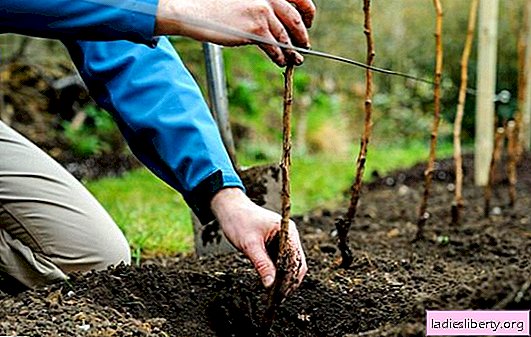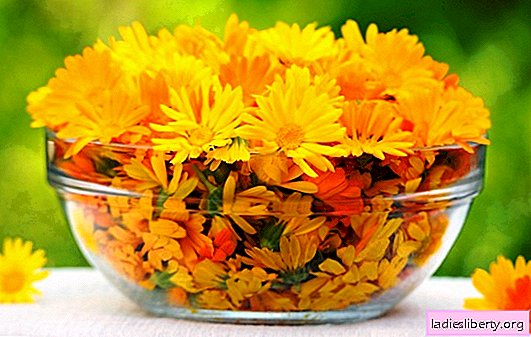
Many are familiar with this picture, when under the gooseberry bushes you can find fallen berries, and the bush looks healthy.
If their number is very small, then do not worry, but the presence of a dozen or two fruits should already alert. Each shrub needs to be taken care of, otherwise problems during cultivation cannot be avoided.
You can understand why a plant sheds berries by examining it well. What to look for first? This will be discussed further.
Gooseberries fall: non-disease causes
Very often, berries fall from a healthy bush. If by all indications the plant is not damaged by diseases: the leaves are green, the fruits are without damage, then the reasons lie in poor care. Yes, oddly enough, but it is.
1. Gooseberries fall due to irregular watering or excess moisture in the soil.
If the weather is rainy and there are few sunny days, then the falling of berries cannot be avoided. In arid regions, on the contrary, regular shrub irrigation should be carried out. Gooseberries especially need it during the formation and ripening of berries.
2. Nutrient deficiency is another reason a plant sheds fruit.
Only timely fertilizer application will help to solve the problem. You need to feed the bushes in early spring. To do this, use infusion of mullein, bird droppings or urea. At the beginning of the growing season, the plant needs nitrogen-containing nutrition. The first feeding should be carried out as soon as the leaves bloom.
During flowering and the formation of berries, gooseberries need potash fertilizers. During this period, ash infusions, potassium sulfate are used.
Advice! You can prepare an ash infusion like this: 100 gr. dilute the ash in 10 liters of water, after a day the solution is ready. You can just sprinkle ash around the bush around the bush. Such top dressing not only nourishes the plant, but also protects it from pests.
3. Lack of light, bushiness.
Gooseberries can not be planted in shaded places, as a result, he will often get sick and shed berries. Take a good look at the bush; it may need thinning. Too thickened plantings cause various diseases. Thinning shrubs is carried out in early spring and autumn, after harvesting. All damaged branches are cut, and those that grow inside the bush.
Gooseberry damage by pests: leaves and berries fall
Excluding all of the above factors, you need to inspect the plant for pests. Often a plant sheds leaves, and then fruits, due to a yellow sawfly. How to recognize a pest?
• The plant begins to lose leaves sharply, they turn yellow and fall prematurely. The shrub becomes bare, only unripe fruits are visible on it.
• Gooseberry berries are smaller, as the caterpillars pick up nutrients from the bush.

The pest parasitizes throughout the season. However, the second generation of the pest causes the greatest damage to the plant. Most often this occurs at the time of ripening berries. Sawfly caterpillars eat almost all leaves from the bush, photosynthesis processes are disturbed, as a result of which the plant discards the fruits.
How to get rid of a yellow gooseberry sawfly
It is possible to prevent a pest attack on a gooseberry planting only by conducting comprehensive plant protection measures.
1. The destruction of wintering pests.
Adult sawfly winter in the soil, and the fight against them must begin in the fall. After harvesting, the earth around the bushes is carefully dug up, as a result of which the sawfly pupae will be on the soil surface. On the contrary, they will not creep away anymore, and with the onset of frost they will die.
2. Cope with the yellow sawfly will help regular inspection of the bush.
All identified parasites must be collected manually. To do this, spread a film under the plant and simply shake pests on it. All caterpillars are destroyed.
3. The larvae of the yellow sawfly cannot tolerate the smells of garlic, wormwood, marigolds.
To combat harmful insects, infusions are used that spray plants during budding.
Important! The most effective tool in the fight against the sawfly is the infusion of marigolds. For 8 liters of boiling water add 15 cups of crushed inflorescences, 50 gr. grated laundry soap. Infuse the solution for a day, spraying twice a week.
4. For prophylaxis, dusting plants with ash is used. Repeat the procedure after the rain.
Gooseberries fall: powdery mildew
The biggest troubles deliver gooseberry diseases to the gardener. One of them is powdery mildew, which progresses rapidly and can affect other crops.

Powdery mildew - This is a fungal disease that manifests itself in a white coating on the underside of the leaf or in separate spots. Gradually, the infection passes to the tops of the shoots, leaves and fruits. By this time, plaque is already similar to felt. With a severe defeat, the berries develop poorly and fall, yield decreases. The appearance of the bush deteriorates: the shoots are shortened, bent, the leaves turn yellow, become wrinkled.
How to deal with the disease
The pathogen overwinters on the affected shrub, in the plant residue, buds and shoots. In autumn, after harvesting, you need to cut out all the damaged branches, moss-covered shoots, twisted and growing inside the bush, and collect fallen leaves. All garbage is taken out of the site and burned.
In early spring, plantings are treated with boiling water. To do this, the water is heated to a temperature of about 70 degrees and the plant is washed well, being careful not to damage the buds.
At the initial stages of infection, you can spray gooseberries with infusion of mullein or manure. For this, 1/3 of the manure bucket is poured with 3 liters of water, insisted for 3 days. Add another 7 liters of water to the finished solution, filter and spray the plantings.
Chemicals are used for severe lesions. Immediately after flowering, preventive treatment with Topaz is carried out. Reprocessing can be done after harvesting.
Important! Planting material cannot be taken from diseased plants; infection occurs rather quickly. Planted on the site you need proven cuttings and varieties that are resistant to powdery mildew.
Observing all the rules for caring for plants, you can grow healthy bushes and harvest a good crop. From the very beginning, having provided gooseberries with favorable conditions for development, the plant will develop a stable immunity, will be less susceptible to diseases and pests.
1. The gardener must follow the agricultural technology of growing crops.
2. Timely water and feed the plant.
3. Sanitize and trim the shrub.
4. Regularly inspect the plant for pests and diseases.
5. At the first sign of damage, carry out the necessary treatments.
With this approach, gooseberries will not shed fruits and leaves. If you stay inactive and let the development of diseases drift, the plant will die in 2-3 seasons. All this time, the fruits will be unfit for food, and the yield will decrease.











